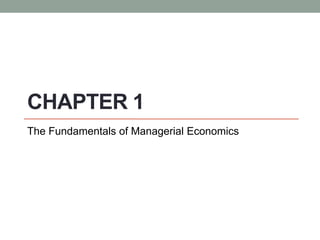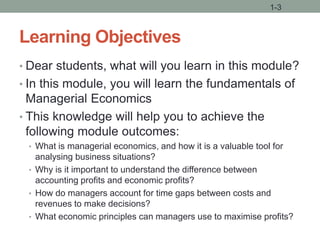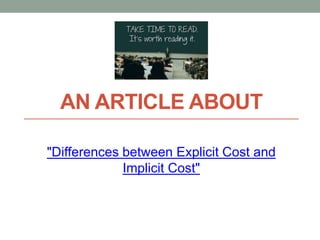This document provides an overview of key concepts in managerial economics. It begins with learning objectives around understanding managerial economics and how it can help analyze business situations. It then defines managerial economics as using economics to direct scarce resources to efficiently achieve managerial goals like profit maximization. The document contrasts accounting profits with economic profits and discusses opportunity costs. It introduces Michael Porter's five forces framework for assessing industry profitability. Finally, it discusses economic incentives and the role of governments in markets.






















































